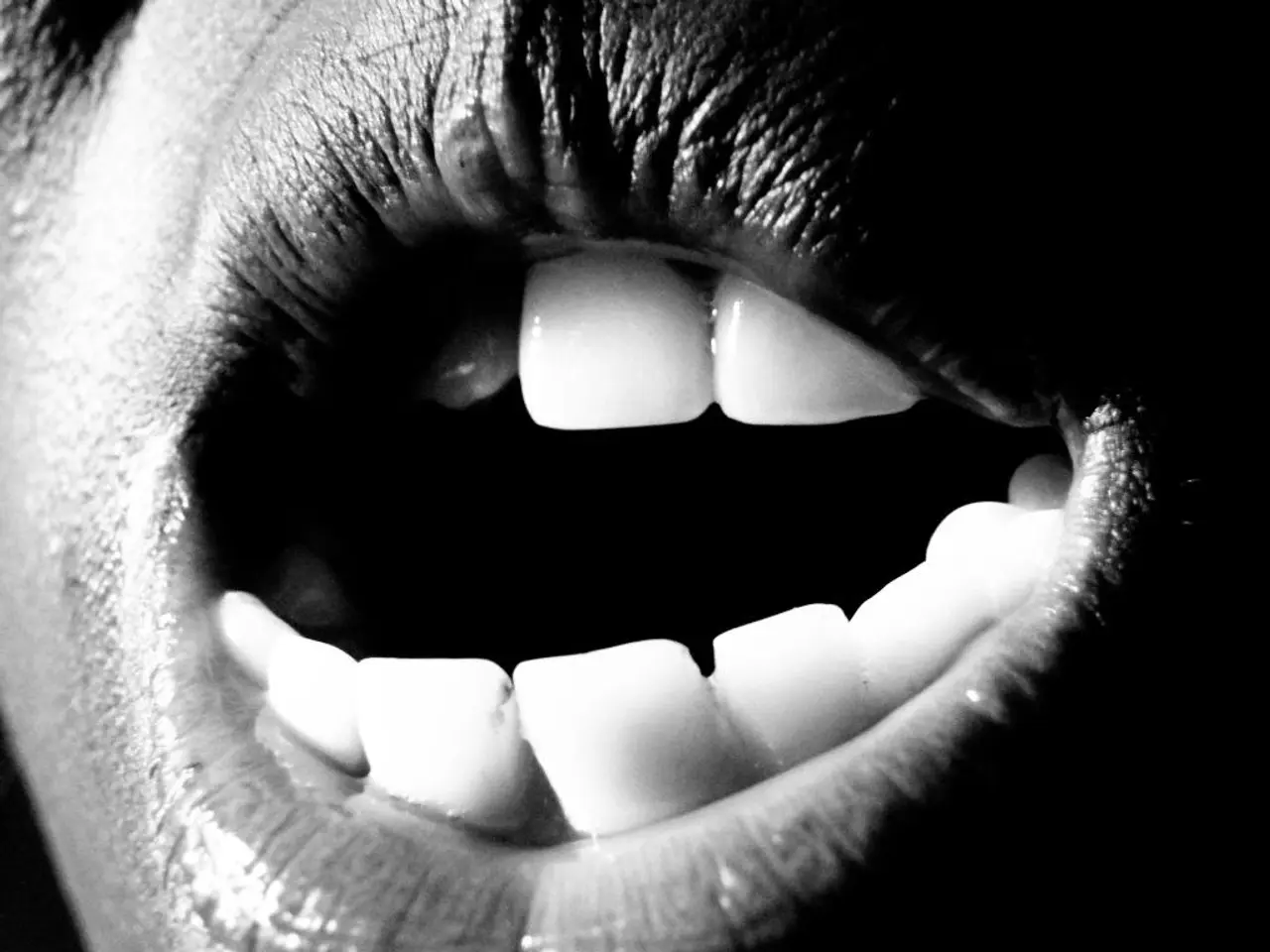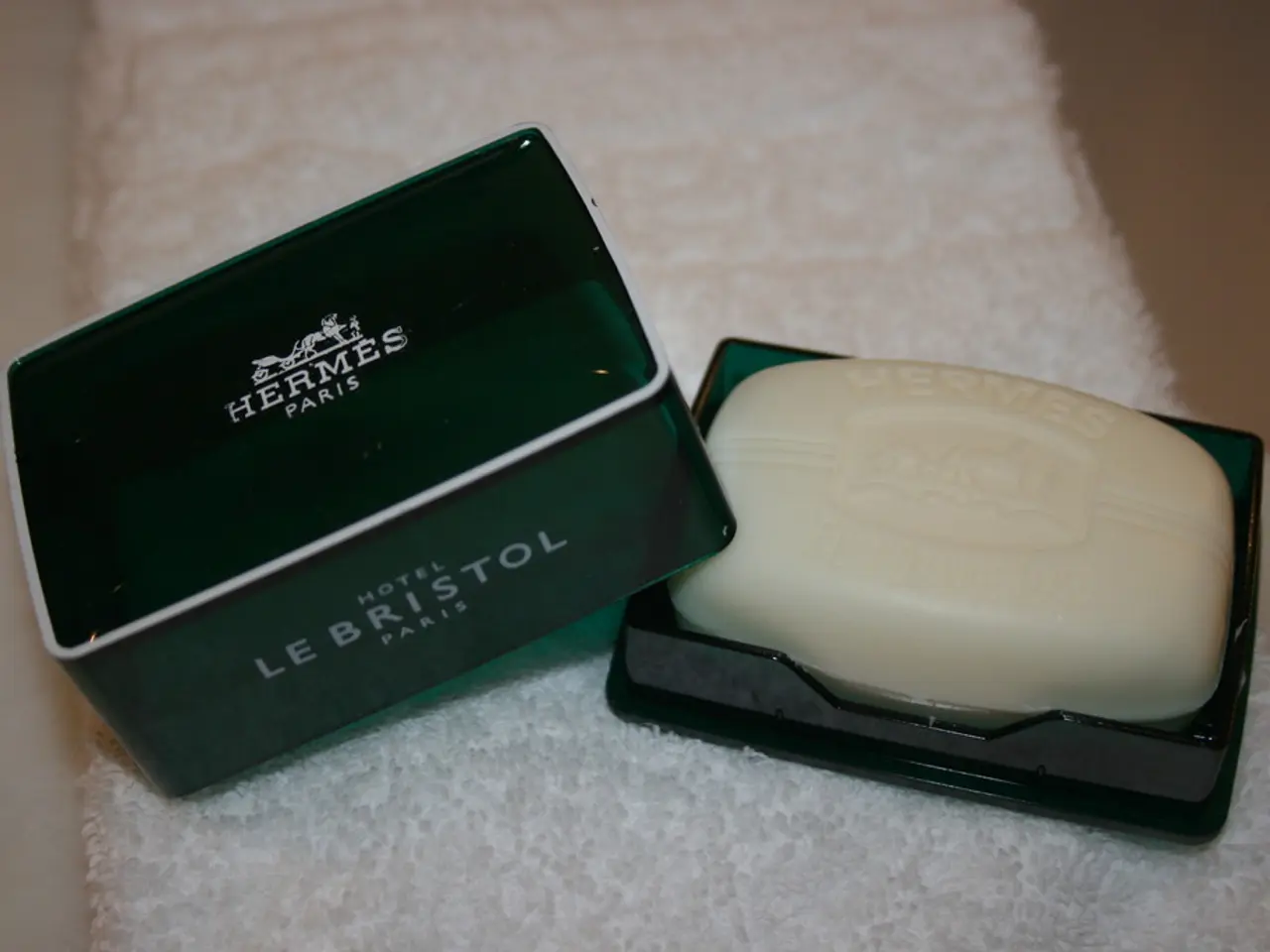Oral Hygiene: Exploring Advantages of Tongue Cleaning and Proper Techniques
In the quest for fresh breath and improved oral hygiene, many people are turning to tongue scraping. This simple, yet effective practice involves using a specific tongue scraper or even a toothbrush to gently pull the tongue forward and scrape it from back to front.
Tongue scraping is an easy method to remove the biofilm on the tongue's surface, which harbours bacteria responsible for producing malodorous compounds and toxins. By scraping the tongue, one can help reduce the bacterial load and biofilm accumulation, leading to a decrease in the production of volatile sulfur compounds (VSCs), major contributors to bad breath.
Recent studies have shown that tongue scraping is effective in reducing bad breath and improving oral hygiene. For instance, the Scrape-n-Suction Tongue Cleaner, a new innovation that combines scraping with suction, potentially enhances oral hygiene benefits and even reduces risks of respiratory infections.
Regular tongue cleaning is also associated with reducing pathogenic bacteria in the mouth, which may help lower the risk of oral-related systemic conditions such as periodontal disease or potentially even oral and gastric cancers.
While tongue scraping is widely recommended as a beneficial adjunct to brushing and flossing to control bad breath, the quality and extent of evidence vary. However, no recent studies contradict the effectiveness of tongue scraping in these roles.
To perform tongue scraping, one should rinse the tongue scraper with soap and warm water after use and store it in a clean, dry place between uses. The process begins with rinsing with warm water after the first pass, repeating the scraping process as necessary, and swishing the mouth with water before spitting it out.
Tongue scraping requires minimal equipment, making it an accessible solution for many. It should not be the only approach to oral health, and one should also practice daily mouth care, including brushing the teeth twice daily with fluoride toothpaste, flossing, limiting sugar intake, and visiting the dentist at least twice per year.
However, it's essential to approach tongue scraping with care. Placing the scraper too far back on the tongue can activate the gag reflex, so care should be taken during use. Applying too much force or using a scraper with uneven edges may cause pain or bleeding, in which case it should be discontinued.
While some research suggests that tongue scraping may reduce potentially harmful bacteria in the mouth, studies have small sample sizes, and the evidence is not conclusive. A 2018 analysis found that tongue scraping improved tongue coating index scores but did not significantly affect VSCs, while a 2019 Cochrane review concluded that the evidence for tongue scraping and bad breath is "very uncertain" due to small study participant numbers.
In summary, current expert and clinical perspectives support tongue scraping as an effective, low-risk practice that improves oral hygiene and helps control bad breath by reducing the bacterial load and biofilm on the tongue’s surface. Further studies continue to explore its broader impacts on oral microbiome health and systemic disease risk.
For those experiencing symptoms worsening or their tongue feeling sore or painful after tongue scraping, it's recommended to consult their dentist to rule out underlying conditions. Consulting a dentist is also advisable if one experiences any discomfort or concerns related to tongue scraping or their oral health in general.
Tongue scrapers are available for purchase online in various forms, such as spoon-like or U-shaped with two handles, and in materials like metal or plastic. With its growing popularity and documented benefits, tongue scraping is a simple, accessible solution for maintaining good oral hygiene and fresher breath.
- Reducing the bacterial load and biofilm accumulation on the tongue through tongue scraping can lead to a decrease in the production of volatile sulfur compounds (VSCs), which are major contributors to bad breath and poor oral health.
- By combining scraping with suction, the Scrape-n-Suction Tongue Cleaner potentially offers enhanced benefits for oral hygiene and may even lower risks of respiratory infections, contributing to overall health and wellness.




